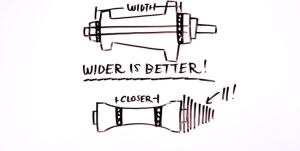For those amazing athletes out there that qualified for The ITU World Championships in London, or the IRONMAN 70.3 World Championships in Las Vegas, or the IRONMAN World Championships in Kona congratulations. You rule and I aspire to be you some day. But as for the rest of us, what do we do now? I was fortunate enough to compete in 3 triathlons this summer but now that the season is winding down, there aren’t many opportunities left in the Midwest as far as Triathlon goes.
So what do I do now? I’ve been training with my tri club, meeting twice, something 3 or 4 times a week. What am I supposed to do now that I’m in the best racing shape of the year and there are no more races for me to do? And what about next summer? I don’t want to have to regain all the aerobic ability I earned over the last season. Come on, there’s gotta be something!
Well, I’m no expert, but I’ve got a plan. And it’s a pretty simple one. I’m going to keep training. And I’m going to keep racing. Now I probably won’t train as hard as I was in the summer. And I don’t have much of an option as far as racing triathlons. But there is something! I’m going back to my roots; running. Now to some it may come as a surprise, but I used be a lot faster. It’s a bit of a cliché, but back when I was in high school…
Running has always been my background. Running cross country, running track, running errands, running the lawn mower, well you get the idea. I’m going to do as many road and trail races as I can find. Not only to stay in shape in to winter, but for fun. Who says I can’t keep getting faster in the off season, too?
I guess you could say that I’m not really done with my racing season, yet. I’ve been planning to run the Sioux Falls Half Marathon since June. After this weekend, though, I decided to run the Jack 15 in Brookings. That isn’t until the end of September. So is my racing season done after that? Well, I did want to run the Newton Hills Trail Challenge. How about after that, though? Nope!
I want to run the Hobo Days 5k. Then I’ll probably run the Turkey Day 5k. Then probably the Jingle Bells Run. Then Maybe the Frosbite 4. Then I’ll probably run the St. Patty’s Day Mile, then hopefully in to early season training, getting ready for a triathlon at the end of April. So I’ll never really have an off season, will I?
I guess you could say that I really won’t have an off season. But isn’t that against the rules?
I’d argue that it’s far from that. And at the same time, I’d argue that it is an off season. I’m going to continue training, I’m going to continue racing, and I’m going to continue eating the right way. But what part about all of this makes it an off season? It’s simple: I’m not going to stress. If I can’t get in that hour long swim, but I have time for 30 minutes, then I’ll just get that in. If I have to get that project done and I’m running out of time, maybe I’ll just do a 3 miles tempo instead of a 5 mile tempo. Either way, I still get to train!
How is this different than what the pros do? I won’t be taking those 6 weeks off with what traditional off-season training calls for, many times with a few weeks of doing nothing. Instead, I plan to just take my training much less seriously for 8 to 10 weeks, even up to 12 weeks depending on how I feel. And I’ll probably get in a few races in that time, but I won’t be taking them quite as seriously.
This all kind of sounds forwards and backwards. That’s probably because it is. Basically, I’m going keep training and entering races. I’m going to do it because it’s fun. And when I start to feel tired (or when the blizzards start to hit), I’ll skip a couple workouts. And when the turkey and all those delicious sides and deserts come out, I’ll grab a second or third glass of wine to wash it all down.
Find local fun runs, charity bike rides, or an obstacle race, maybe even enter an eating contest. Just make everything about having fun and being happy! And if that means keep training, keep training. Just focus on the fun.

 From attending class, to studying, to working, and back to studying, where are you supposed to find time for eating, sleeping, and hanging out with friends, let alone getting in those 2-hour bike rides and 2500 yard swim workouts, or those 45-minute tempo runs?
From attending class, to studying, to working, and back to studying, where are you supposed to find time for eating, sleeping, and hanging out with friends, let alone getting in those 2-hour bike rides and 2500 yard swim workouts, or those 45-minute tempo runs?
